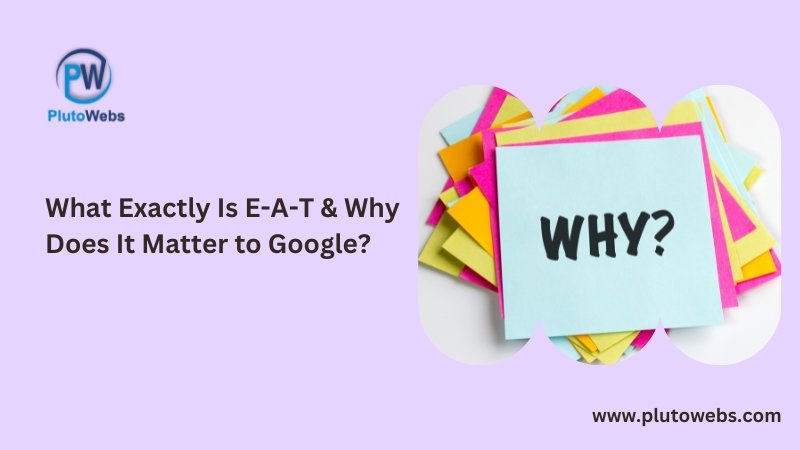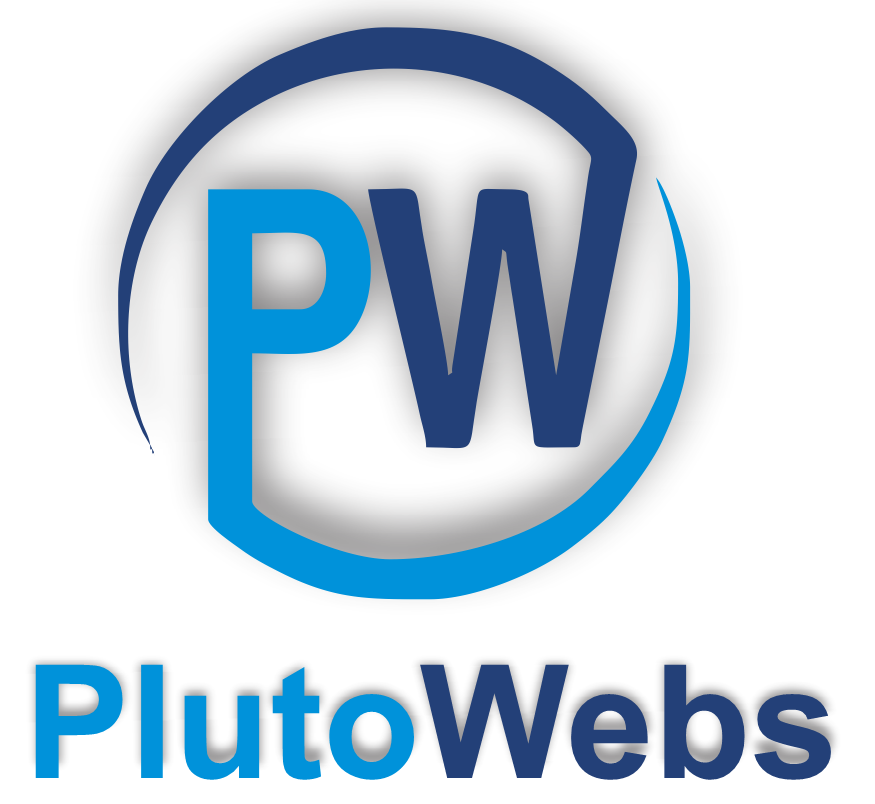What Exactly Is E-A-T & Why Does It Matter to Google?

Do you have all you need for your SEO to rank well? Has the performance of your website been unexpectedly poor? It’s time for you to implement Google’s search algorithm E-A-T if the answer to the questions is yes because, as they say, “You are what you E-A-T.” What does E-A-T stand for? Google developed this idea in 2014, however it gained attention once more in late 2018. Expertise, Authoritativeness, and Trustworthiness are abbreviated as E-A-T. Expertise Your website should highlight the knowledge you possess, mainly if your primary subject matter affects someone’s wealth and health. If the website is a comical, individualistic, or gossiping website, it is less important. Establish trust with your users, add value to your core content, and attract a better audience by demonstrating your understanding of a subject or by appointing an expert to write on a topic similar to his genre. Authoritativeness In a blog or discussion in a forum or community, you need to demonstrate your authority. This can be accomplished by mentioning the author’s qualifications, including his name, occupation, biography, and most significantly, experience. Trustworthiness In the end, this should be the core function of your website. Through the authenticity of your material, your users should be able to put their faith in you and your goals. The trust factor is particularly crucial when it comes to eCommerce websites because customers are asked to disclose their bank information and are frequently found to be hesitant to take any action. It is crucial that your website’s visitors feel secure when accessing the content there. Why is E-A-T so crucial to the content of your website? You may be asking why being an authority, having trust, and being an expert are crucial in any case for the search engine performance of the website after reading this quick introduction. E-A-T is one of the top three factors that Google takes into account when evaluating the quality of a page. When grading a page or website, quality raters consider how it adds value to the user’s life and whether the content is worth their comfort and that of other users. Therefore, if a web page’s content is welcoming, informed, and worthwhile of sharing, it will undoubtedly secure a high degree of E-A-T and consequently improve the page ranks. What Connection does it (E-A-T) have to YMYL pages? The YMYL (Your Money or Your Life) pages are closely examined by Google because they have a significant impact on the visitors to your page. Pages that offer advice on finances, health, or the law are referred to as YMYL pages. In general, the YMYL page refers to any web content that influences a user positively or badly and indirectly affects that user’s health, wealth, or happiness. Simplifying even further, for instance: An eCommerce page requesting bank information A medical website that provides information about a rare condition A financial website offering legal counsel or information on financial products As a result, YMYL pages with high rankings will have a lot of E-A-T. This is because your material meets user needs that advance E-A-T’s objectives. As a result, websites that effortlessly follow this win the game according to Google’s algorithm. Final Wrap Up By creating accurate, practical, and interesting information, you are the only one who can make your page or website as valuable as it possibly can be. All of this becomes necessary if your website or page meets the criteria for the YMYL pages, and you should make an effort to comply with Google’s specifications. Google will give your page low-quality ratings if it determines that your content does not meet the E-A-T criterion. Therefore, if your content doesn’t demonstrate your expertise, authority, or reliability, it might be mistaken for being of low quality. As a content creator, it’s important to recognise that your work must satisfy both your users’ expectations and the needs of the quality raters. When both sides are satisfied, Google is satisfied too! Last but not least, applying E-A-T correctly each and every time will improve the quality of your material overall and add value to the lives of your users. Google obviously wants you to do that!
Content Optimization: All you Need to Know About

People often refer to Search Engine Optimisation (SEO) when they talk about Content Optimisation. This does not mean that to make your content search engine friendly, you don’t need to optimise it. Let us take a tour through this blog to get to know how we can optimise our content to improve our website performance. What Is Content Optimization? Content optimisation is creating content whether it’s a website blog or audio or visual content, to create in such a way that it helps in reaching a large number of target audiences. It not only involves performing certain technical tasks, but a lot of time-tested methods are also required to reach your desired goals. Important editorial and marketing segments are required to go through as well. Advantages of Content Optimization Content optimisation is important because without it your content or website will not be found by your audiences. Search-based queries are not the only method people find content, yet they are a powerful way people can find your content, even if you don’t send it to them directly as you perform in social media and ads. Potential customers will find your content if you optimise it properly. Reasons you need to optimise your content: To rank on SERPs In Earning links To educate audiences Top-of-the-funnel leads increase To make your lead generation increase. For driving social engagements How does Content Optimization work? Making changes to the structure, copy, and metadata of your content to make it search-engine friendly is how content optimisation works. For example, for making an article separate into different sections, you can make section titles bold throughout. Tagging them into different headers (H1, H2, H3, and so on) can help you in getting green signals in the search traffic. There are more technical ways of making your contents look great. How can you make your Content Optimized? There are a lot of things to keep in mind when it comes to optimising your content. But firstly, you need to ask yourself some questions about: What would be the search intent for these keywords Whether you can improve the content already ranking on the terms. What type of content do you need to show to your audiences? After you have given thought to these questions, you can have a look at the ways to optimise the content. Optimizing Text There are many things to keep in mind over here: Writing well-written content – Over here there are many things that you shouldn’t do rather than doing it your content must be unique and must be relevant to the content, but you need to avoid keyword stuffing. Keyword really helps in driving traffic to your content, but excessive keywords are harmful to your page. Opting for more content periodically – Just like you can expect that every day something new to happen, similarly the search engine loves new and fresh content. If you publish new content in a certain period, then you have a chance to rank well in the SERPs. Title Tag Optimisation – The title tag helps the search engine to locate your content through it. It is displayed in the clickable result in the SERPs. Its code is like this:<head><title>Title Example</title></head> But it’s not really necessary to match your title tag with your article or the web page. Optimised H1 Tag – THe heading of a webpage is indicated by an H1 tag and helps the search engine understand what type of content is on that page. Its code is like this:<h1><title><h1>. A good H1 tag should follow the following rules: To include your target keywords. Be different marginally different or a bit the same from the title page. To use only once per page. Optimised H2 Tag – The next level heading after the H1 tag is the H2 tag and it appears typically as the main section headers of the webpage article. Its code is like this: <h2>SUBTITLE</h2>. You need to keep in mind in the case of both H1 and H2 tags, that we should not overuse them. We need to make sure that every time it comes, they should provide valuable and relevant information to the audience. Optimised Meta Description – The short snippet appearing underneath the title tag in the SERPs is called the Meta Description. Its code is like this: <head> <meta name=”description” content=”Text that will appear in search results”></head> Its approximate character limitation is 150 to 160 characters. To compel people to click on your listings and visit your website, you should create your Meta description like an ad copy. Targeting keywords in the first Paragraph The URL can be Search Engine Friendly – THe URL of your webpage should be meaningful and straightforward so that it also provides the search engine with enough descriptive information. So this means too that you don’t need to create the URL as same as the title of your webpage and article. Optimizing Images An image cannot be in touch with an algorithm but we should not forget about the quote that says about an image that is worth more than a thousand words. An image also needs to be tagged properly so that be noticed by search engines. Alt Tages – Though many of them use this term, it is generally called Alt Text or Alt descriptions. It helps search engines to let them know about your appearance and function through your image(s). Its code is like this: <img src=”kittenonbed.gif” alt=”Sleepy Kitten”>We need to avoid keyword stuffing over here as well and the Alt Tags should describe the images both sufficiently and accurately. Image Tags – An image tag helps in indicating the words that appear when you float an image and help to understand its context to the users. Optimizing Videos Search Engines are not only for texted articles, theta re for videos as well. YouTube is the biggest video steeming platform but there are others as well like Vimeo and Dailymotion. Just like the images, you also need to keep
